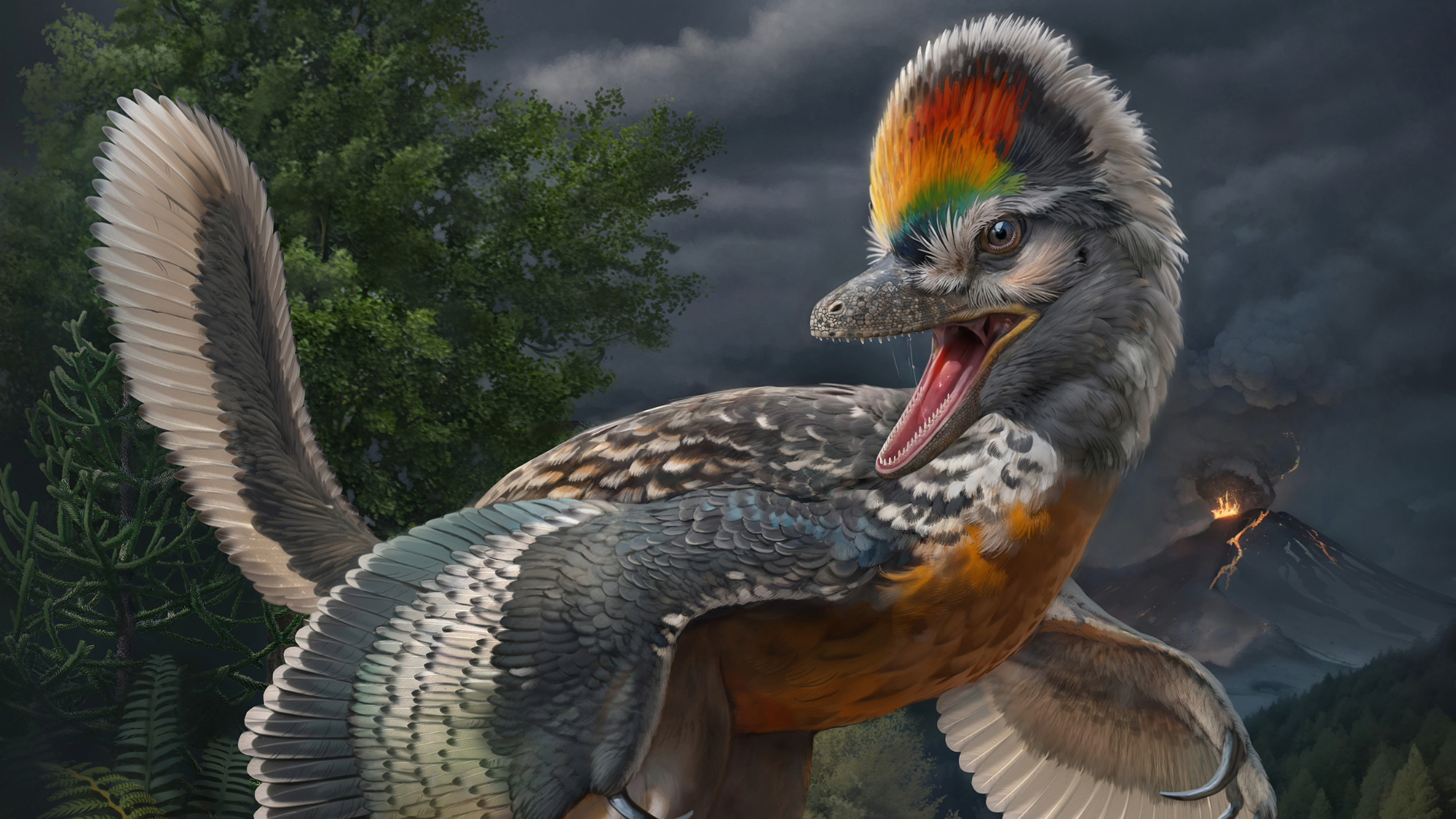

A newly discovered early bird-like dinosaur species is filling in some of the holes in the dinosaur-to-bird evolutionary story. The new species, named Fujianvenator prodigiosus, has a strange mixture of physical features shared with other extinct prehistoric animals from therapod dinosaurs to birdlike troodontids. This unique beast was described in a study published September 6 in the journal Nature.
[Related: Birds are dinosaurs, and this fossil detective has rooms full of bones to prove it.]
Birds diverged from theropod dinosaurs by the Late Jurassic (about 161 million to 146 million years ago), but the general understanding of the earliest evolution of the clade comprising most modern birds, known as Avialae, has been slowed due to a limited diversity of fossils from the Jurassic. No known avialans have been reported from the Yanliao Biota paleontological site in northeast China, which dates back to the Middle–Late Jurassic about 166–159 million years ago or in the the slightly younger German Solnhofen Limestones, which preserves an early genus of avian dinosaurs called Archaeopteryx. This leaves a gap of about 30 million years before the oldest known record of Cretaceous birds.
Jurassic era avialans are a critical key to deciphering the evolutionary origin of the avialan body, and this elusive group is key to piecing together the origin of birds. That’s where the fossilized remains of the 148 to 150-million-year-old avialan theropod Fujianvenator prodigiosus comes in. It has some physical traits shared with extinct avialans, the small and bird-like troodontids that lived during the Cretaceous Period, and theropod dinosaurs called dromaeosaurids that were similar to raptors and also lived during the Cretaceous. According to the team on this study, this mixture shows the impact of evolutionary mosaicism–different rates of evolutionary change in body structures and function– in early bird evolution.

A joint research team from the Institute of Vertebrate Paleontology and Paleoanthropology (IVPP) of the Chinese Academy of Sciences in Beijing and the Fujian Institute of Geological Survey (FIGS) described and the avialan theropod that was found in Zhenghe County, Fujian Province in southeastern China.
“Our comparative analyses show that marked changes in body plan occurred along the early avialan line, which is largely driven by the forelimb, eventually giving rise to the typical bird limb proportion,” study co-author and paleontologist Min Wang from IVPP said in a statement. “However, Fujianvenator is an odd species that diverged from this main trajectory and evolved bizarre hindlimb architecture.”
[Related: Birds are so specialized to their homes, it shows in their bones.]
During the Late Jurassic-Early Cretaceious, southeastern China saw some intense tectonic activities that resulted in a lot of movement of magma below the Earth’s surface. This created some deep basins with the Earth including where Fujianvenator was found.
Fujianvenator prodigiosus was likely about the size of a present day pheasant and had a tibia (lower leg) that is twice as long as its femur (thigh), which is a previously unknown condition for non-avian dinosaurs. This suggests that the bird was either a high-speed runner or a long-legged wader and it likely lived in swamps. This new finding contrasts with other early avialans, which are believed to have been more tree and sky-dwelling.
Fujianvenator’s remains were found among a diverse collection of vertebrate fossils dominated by aquatic and semiaquatic species, including turtles and ray-finned fish. The authors named this fossil collection the Zhenghe Fauna. This diverse array of inhabitants and environment suggests that it was the site of emerging Jurassic vertebrate fauna around the time when Fujianvenator was there. This find and timing fills in an important gap in our understanding of ecosystems in Late Jurassic Northeast Asia and the team plans to continue to explore Zhenghe and other nearby areas.
